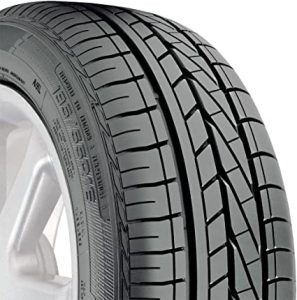Run flat tires are specifically designed to give you the extra time needed to drive to the nearest mechanic or professional in case you have a flat tire. But how can you identify a run-flat tire at a face evaluation, or are we to wait until they become flat to identify they are run-flat tires? Obviously, no, I will walk you through some simple steps to tell apart a run-flat tire from one that’s not.
1). Check Tires For The Words ‘Run flat’: You should check the side walls of your tires for an inscription of ‘run flat’ to know if they are run flats. Tire brands like Pirelli usually have the words ‘run flat’ inscribed on their run flat tire sidewalls.
2). Check Tires For Some Codes Depicting Run Flat: Different vehicles have different codes inscribed on them, depicting a run-flat tire. One such code is the ROF (Run On Flat) found on Bridgestone, Goodyear, and Dunlop. We also have the EMT (Extended Mobility Technology) usually found on Goodyear tires.
Some other codes found on run-flat tires are: SSR (Self Supporting Run Flat Tires) found on Continental tires; DSST (Dunlop Self Supporting Tire) found on Dunlop Tires; ZP or ZPS (Zero Pressure Or Zero Pressure System) found on Michelins and Yokohama tires, and lastly the RFT (Run Flat Tire) codes found on Bridgestones’ tires.
Once you see the inscription for the above codes, you have a run-flat tire.
3). Check If The Car Comes With A Spare Tire Or Not, Or Check the Manufacturer’s Manual: Another way to check if your tires are run flat is to check if your car comes with a spare. Unfortunately, cars with run-flat tires often come with a repair kit instead of a spare tire in their trunk.
Or Check your manufacturer’s manual in case where you can’t get the above. Your manufacturer’s manual should be very detailed and contain the following information.
4). Look At The Driver’s Side Dashboard For A Tire Warning Light: Another way to check for run-flat tires is to check the driver’s side dashboard, which has a TPMS (Tire Pressure Monitoring System). The TPMS function monitors the tire pressures and alerts the vehicle’s owner by displaying a light when tire pressures are low. Again, you can check your owner’s manual to read the light and know the next action to take for every light display.

How To Tell The Difference Between Run Flat Tires And Regular Tires
Running flat tires comes as an advance in knowledge and technology. These sets of tires are designed to save car owners sometimes from being able to fix their tires or get them over to the professional, which wasn’t possible some few decades back with regular tires.
Below are some differences between run flats and regular tires:
Side walls: Run-flat tires are specifically designed to give you the extra time needed to drive to the nearest mechanic or professional in case you have a flat tire. These sets of tires are made with side walls of about 3/4 thick, compared to regular/standard tires with sidewalls of about 1/8 thick.
Why the extra thickness? In the real sense of the word, tires don’t carry the load/weight of a car; instead, the pressure in the tires does. So these tires are designed to glide you over for some distance at about 50 meters per hour until you get to where you will get them fixed.
Allows driving on a flat tire: Run-flat tires are designed as self-supporting tires with reinforced sidewalls that aid movement when vehicles are punctured. These reinforced sidewalls also prevent air loss when punctured; this is another great feature that reduces pressure losses in these vehicles.
It was coupled with the support ring of rubber that supports the car weight and prevents air loss in tires.
Installation: Run-flat tires are better on vehicles with TPMS (Tire Pressure Monitoring System) and need to be better equipped on vehicles with TPMS. At the same time, regular tires would serve you better on vehicles without TPMS.
Stability: Run-flat tires are designed to grip still, whether punctured or start losing air, compared to regular tires that lose their grip on the road.
Cost: The cost of installing run-flat tires is higher than regular tires. This single factor might be the cause of why run-flat tires are less used compared to regular tires, which are expensive and have easy install.
Reduced Tread life: Run-flat tires have a tread made with soft rubber; this consideration is factored in so run-flat tires can support vehicles’ weight when punctured, resulting in the softer tread in the run-flat tire, unlike regular tires.
Can You Repair A Run Flat Tire With A Nail In It
We can conclude that run-flat tires are amazing due to their amazing features of enabling driving with a punctured tire or a nail. But it doesn’t guarantee that you can cover hundreds of miles; they are only designed to buy you time for, let’s say, 50 miles at about 50MPH.
While you are used to the fact that tires are repairable, due to the reinforced sidewalls of run-flat tires, it becomes hard to tell if they have sustained internal or secondary punctured. So common advice you would be given is to change your run-flat tires completely for a puncture caused by objects like nails since they may lead to a secondary tear of the tire’s internal structure.
Can You Put Air In A Run Flat Tire?
While run-flat tires are mostly referred to as self-supporting tires, you should avoid making the mistake that does not need air. All tires, including run-flat tires, need air as this is the main source of the tire’s pressure, and pressure is known to be responsible for supporting the weight or load of vehicles and not the tire itself.

